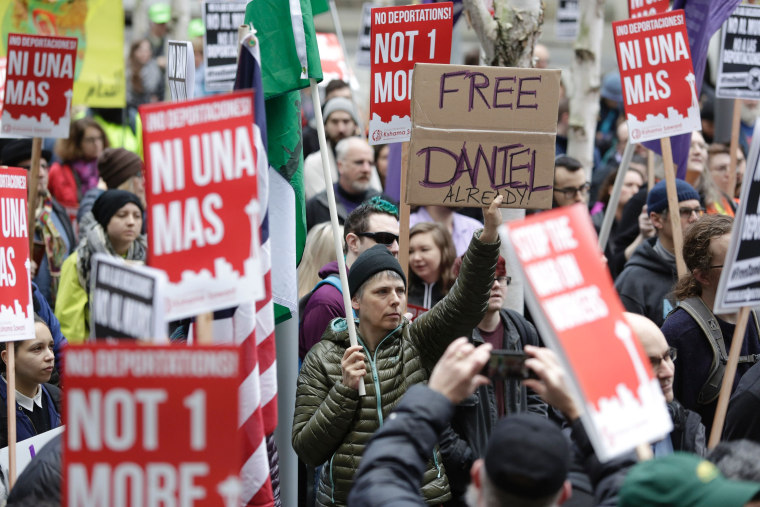This week, the Trump administration unveiled new immigration policies to ramp up border security and expand authorities to deport undocumented immigrants. The new rules, formally released by the Department of Homeland Security, raise several questions about how immigration policy might change.
What is the new policy?
The goal is to make it easier to deport more immigrants. Under the new policy, law enforcement may pursue a wide category of undocumented immigrants, including anyone “with a chargeable criminal offense.”
In contrast to some of President Obama’s policies, the rules state they do not exempt any “class of immigrants” from being deported. The basic idea is that authorities may deport a wide range of undocumented immigrants, even if they have not been convicted of crimes.
How many immigrants are serious criminals?
President Trump has claimed that three million undocumented immigrants are involved in major criminal activity, such as gang membership or drug trafficking. Experts say that is not true.
There have been roughly 300,000 felony convictions among the population of undocumented residents, according to the Migration Policy Institute. Indeed, those figures help explain why a policy contemplating a large number of deportations would have to deport more than serious felons.
Will deportations be faster?
Yes. The new policy expands a process called expedited removal, which gives law enforcement more authority to detain and deport an individual, within 24 hours, without access to safeguards like seeing a lawyer or judge. Proponents say this approach streamlines the process. Opponents say fewer safeguards increase the risk of errors and human rights violations.
Expedited removal was already in use for a narrow group of cases. The Obama administration applied it to situations where people were close to the border and recently entered the country. The new Trump policy expands it to a much wider group of people – all over the country, not just near the border, and even for those who have been here up to two years.
What about undocumented children or the “Dreamers” program?
The new policies do not end the Obama Administration’s policy of Deferred Action for Childhood Arrivals (“DACA”).
For undocumented children who came to this country before the age of 16, that policy allowed them to defer removal proceedings and get permission to work.
The Trump administration could still change or end that policy in the future.
What about undocumented immigrants who access public benefits?
Trump’s policy calls for deportations of undocumented immigrants who abuse public benefits.
This is a sticky rule. On the one hand, there is precedent for barring the entry of potential immigrants who are “likely to become a public charge.” Federal immigration law draws that line, in order to protect the U.S. from potential freeloaders. It is not clear, however, how DHS would define “abuse” and who would make that call.
Is the Trump administration building the Wall?
Not exactly. But in the new policy, the DHS takes two potential steps towards a wall. It orders the government to begin planning and designing a border wall, and asks the government to count up all the non-intelligence financial aid that the U.S. gives Mexico.
PHOTOS: Here's What the U.S.-Mexico Border Looks Like Before Trump's Wall
These steps are in line with statements Pres. Trump has made about the wall, but are still a long way from building it. For example, actually building an entire wall could cost over $21 billion dollars, according to government estimates, which would require massive appropriations from Congress. The President cannot do it alone.

